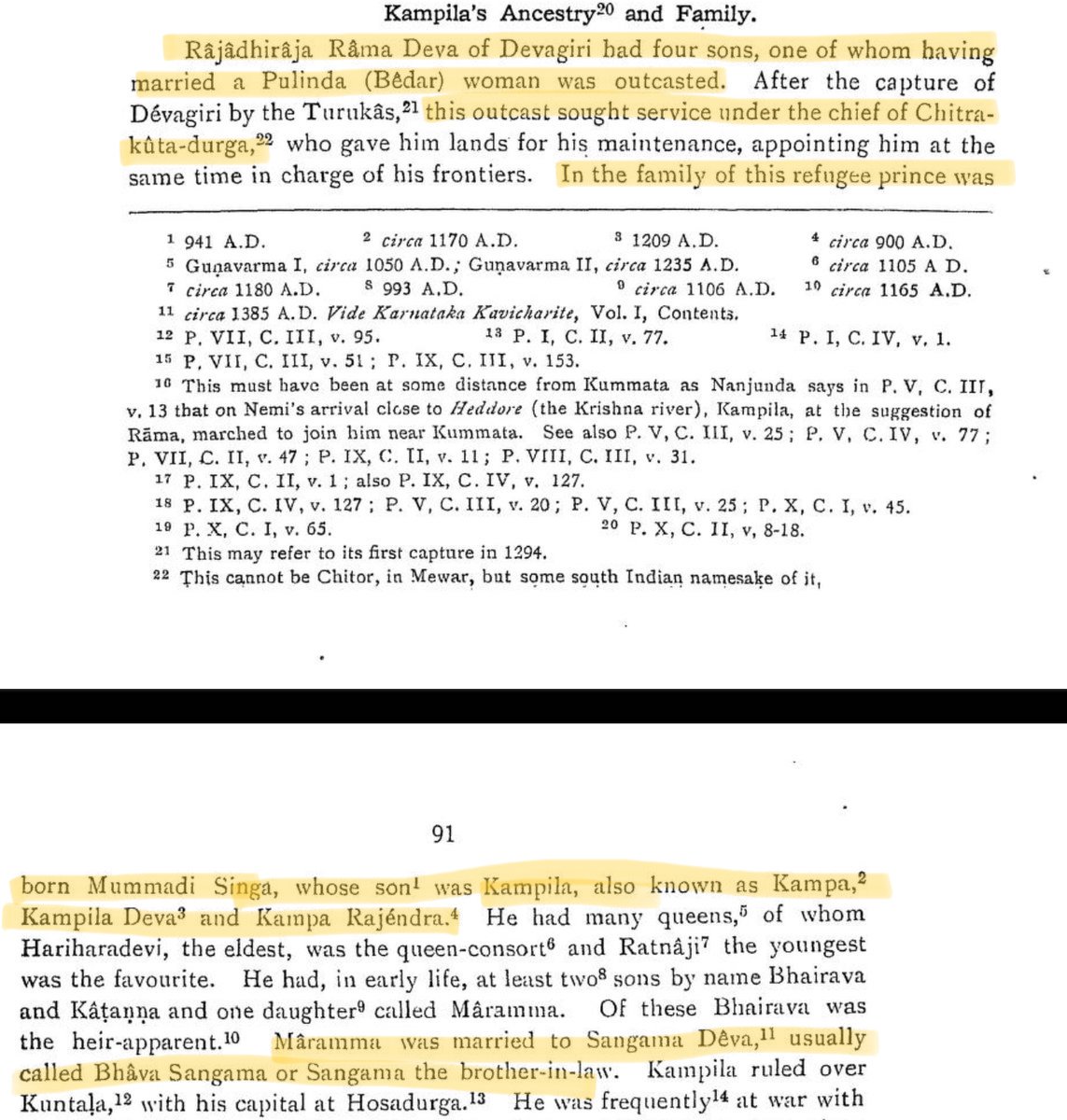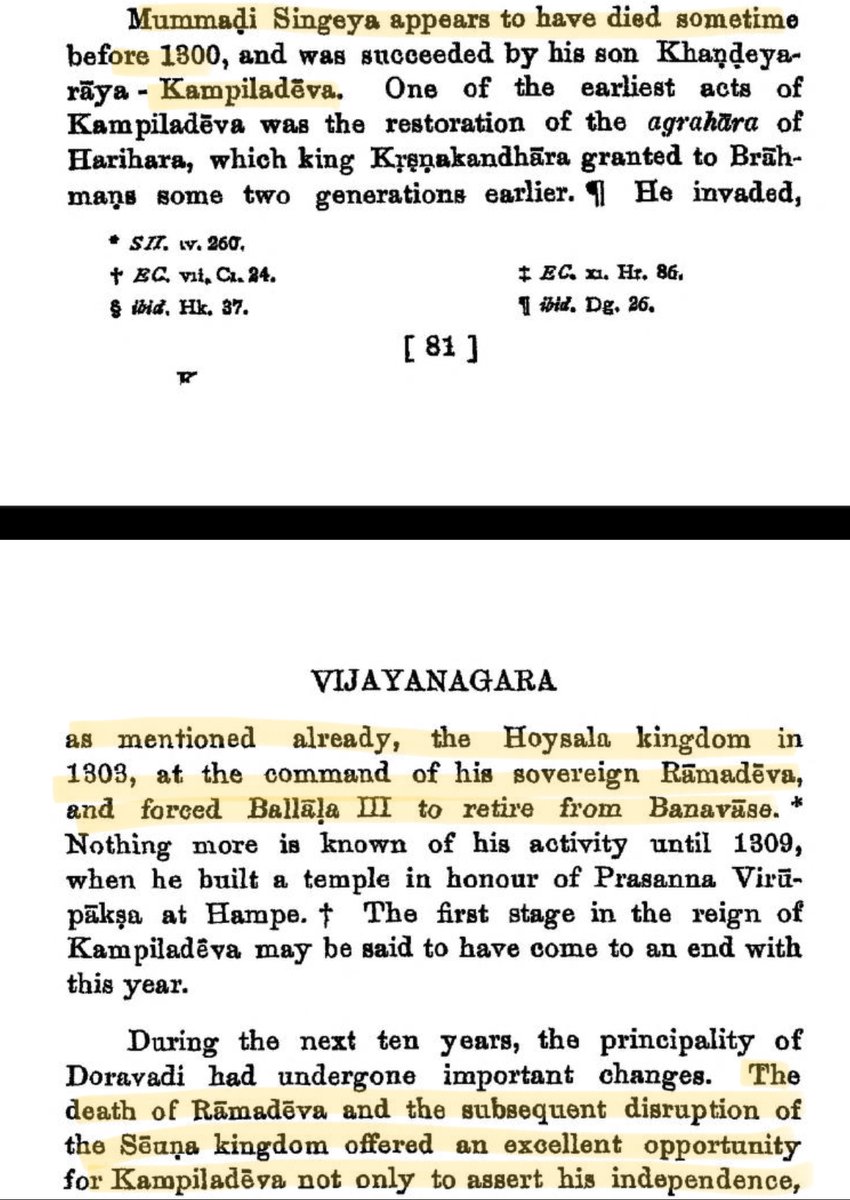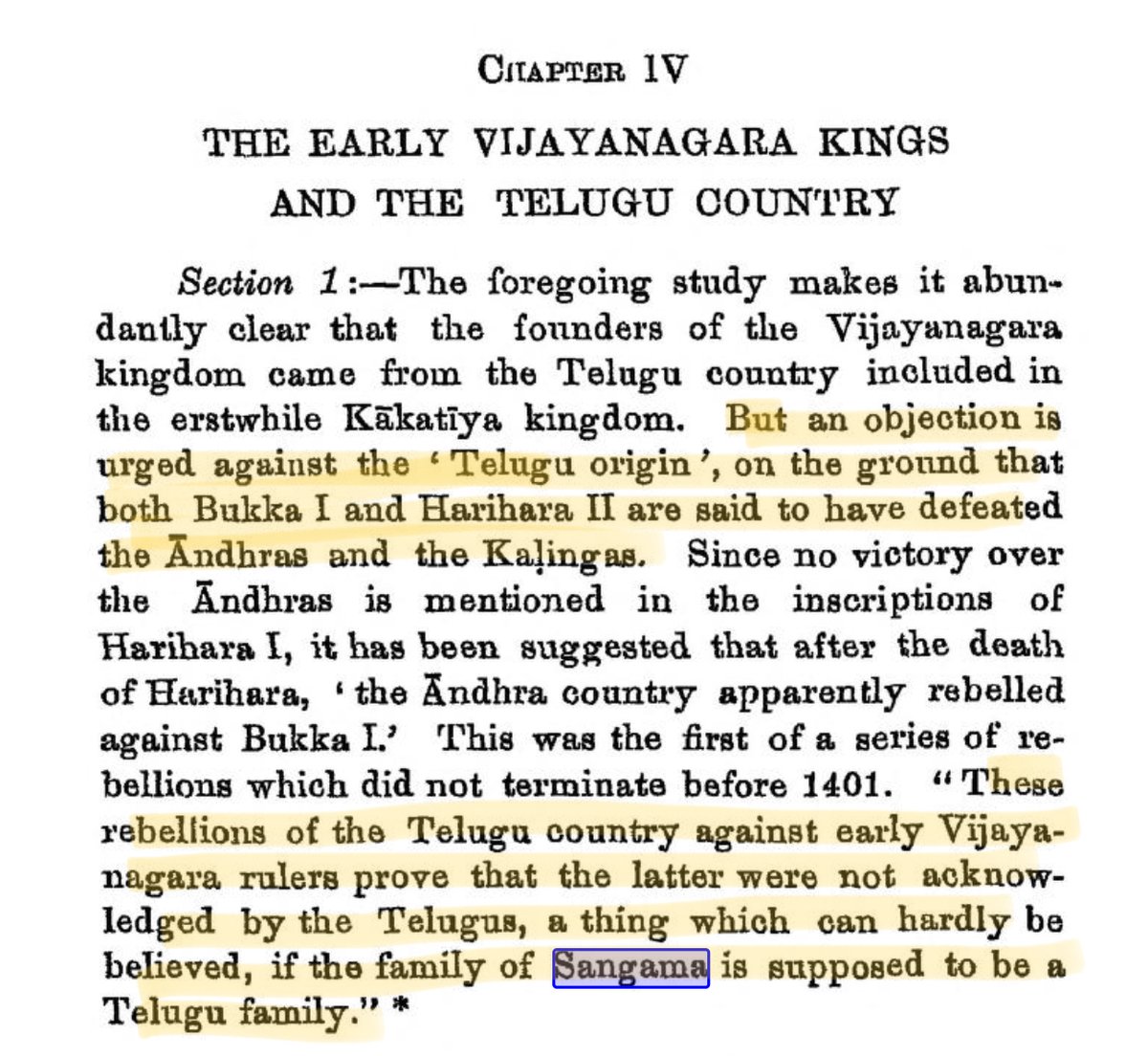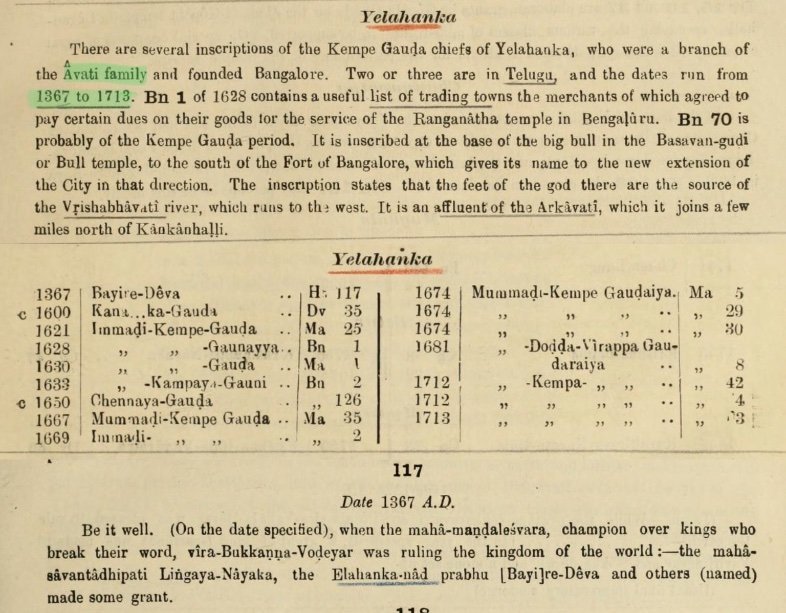Seuna Yadava Ramachandra of Devagiri had many sons.
One of them was Mummadi Singa who established Kampili kingdom,
Another was Sangama - the father of Harihara & Bukka, the founders of Vijayanagar.
Saluvas too have a history of fighting under Seunas against Hoysalas. 1/10
One of them was Mummadi Singa who established Kampili kingdom,
Another was Sangama - the father of Harihara & Bukka, the founders of Vijayanagar.
Saluvas too have a history of fighting under Seunas against Hoysalas. 1/10

According to Nanjunda Kavi, a Vijayanagar court poet, in 1525, the founder of Kampili kingdom Mummadi Singa was a son of Rama Deva of Devagiri who was outcasted for marrying a Bedar woman. He took refuge with Chitradurga chiefs when Devagiri was captured by Delhi Sultanate. 2/10 

Mummadi Singa’s son was Kampili Deva. Father and son had served Seuna Rama Deva of Devagiri. Kampili Deva had fought against Hoysala Ballala III to protect Banavasi (which was under Seuna territory). When Rama Deva died, he asserted independence and founded Kampili Kingdom. 3/10 



Another dynast that fought the Hoysalas under the Seunas during this period in 1300 was Kavadeva, a Kadamba.
Prior to this period we even hear of a *Saluva* Tikkama who fought Hoysala Narasimha IIII (father of above mentioned Ballala III) as a general under Seunas in 1276. 4/10

Prior to this period we even hear of a *Saluva* Tikkama who fought Hoysala Narasimha IIII (father of above mentioned Ballala III) as a general under Seunas in 1276. 4/10


Now we’ve established both Kampili & Saluvas were related to Seunas.
Another son of Seuna Ramachandra Deva was Sangama. He was leading an expedition elsewhere when his father lost to Khilji in 1296.
Sangama himself lost to Malik Kafur in 1307 & his father was carried off…5/10

Another son of Seuna Ramachandra Deva was Sangama. He was leading an expedition elsewhere when his father lost to Khilji in 1296.
Sangama himself lost to Malik Kafur in 1307 & his father was carried off…5/10


to Delhi & sent back after a few months of kind treatment. Rama Deva remained loyal to the Sultan till his death.
Aforementioned Kampili kingdom broke free from Seunas.
In 1312 after he had taken the throne following his father’s death, Sangama was again defeated by Kafur…6/10
Aforementioned Kampili kingdom broke free from Seunas.
In 1312 after he had taken the throne following his father’s death, Sangama was again defeated by Kafur…6/10

…and forced to flee (probably took refuge in Kampili). Kafur led one unsuccessful expedition against Kampili before he was recalled to Delhi, where he died (1316).
Nanjund Kavi mentions a matrimonial alliance between Sangama Deva and the Kampili Royals. 7/10
Nanjund Kavi mentions a matrimonial alliance between Sangama Deva and the Kampili Royals. 7/10

According to tradition & historian consensus, Harihara and Bukka, the sons of Sangama are taken prisoners by the Delhi Sultan when Kampili falls in 1327. They are converted to Islam and sent back as vassals, but revolt and go on to establish Sangama dynasty of Vijayanagar. 8/10 

The above snippets are from Nilakanta Sastri who proposed that Harihara & Bukka were of Kannada origin but serving Kakatiyas.
Later historians disagree & some say they were in Kampili, others Hoysala court (Harihara’s daughter was married to a nephew of Veera Ballala III). 9/10


Later historians disagree & some say they were in Kampili, others Hoysala court (Harihara’s daughter was married to a nephew of Veera Ballala III). 9/10



But the common consensus is that Sangama, the last Seuna Yadava king was father of Hakka & Bukka, the founders of Vijayanagar.
So Seuna Yadavas, who started out as Kannadigas also finally ended as Kannadigas. 10/10



So Seuna Yadavas, who started out as Kannadigas also finally ended as Kannadigas. 10/10




Tagging @hamsanandi @a_srinidhi
• • •
Missing some Tweet in this thread? You can try to
force a refresh


















































